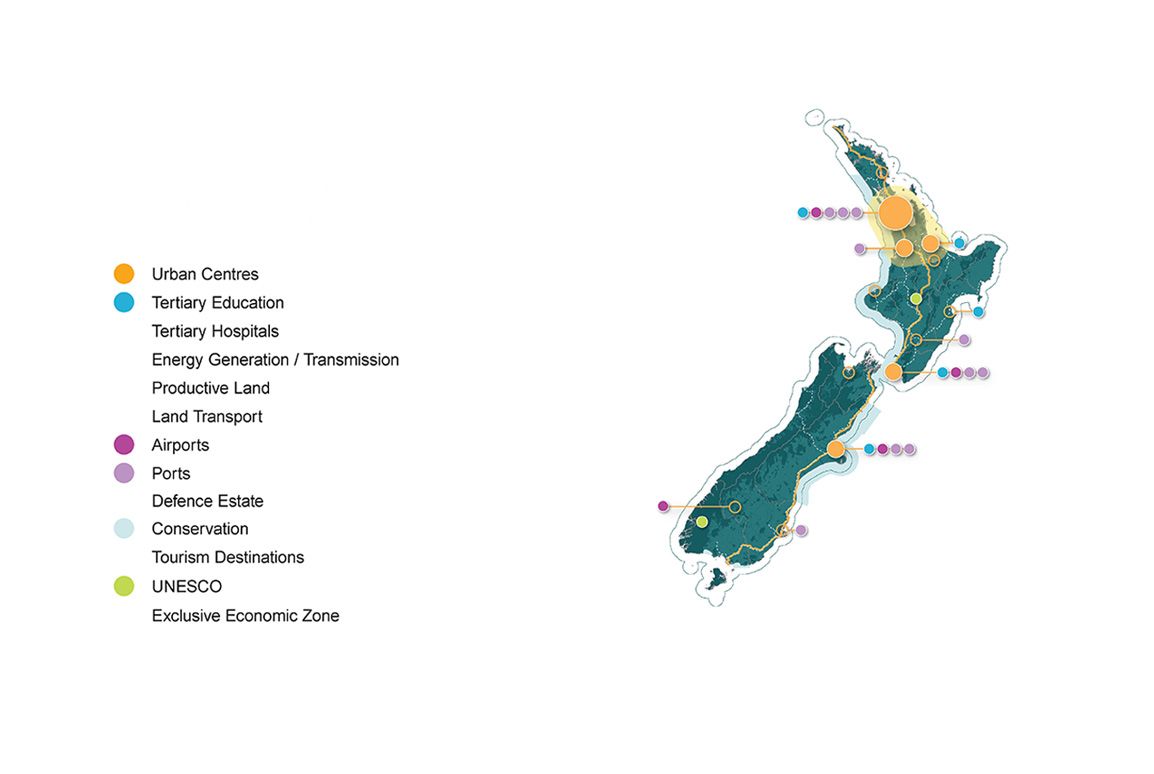Does New Zealand Need a National Spatial Plan?
17 August 2023
Tim Church and Stephanie Griffiths are collaborating with several Local Authorities and their project partners, including Mana Whenua, to prepare and implement local spatial plans at a District level.
With New Zealand’s resource management system undergoing the most significant review since the Resource Management Act was enacted in 1991, they say this is the ideal time to develop a National Spatial Plan.

What is a Spatial Plan?
A Spatial Plan is a high-level strategy document that outlines a comprehensive direction and rationale for a particular area’s development and transformation over 30 years. It serves as a shared vision, establishing clear expectations for future changes; aiming to create a livable environment that offers positive experiences for residents, businesses, and visitors; while integrating existing, more targeted plans, strategies, and projects to achieve better and sustainable outcomes.
Facing challenges associated with coordinated growth management, as well as the need to address issues like land use and transport integration, housing affordability, infrastructure investment, and climate change adaptation, Central Government and Local Authorities have increasingly turned to spatial planning to comprehensively tackle these challenges and align infrastructure, transportation planning, and land use to optimise effectiveness and efficiency.
As part of the Resource Management Act reform, a new Spatial Planning Act (SPA) is proposed, alongside the Natural and Built Environments Act (NBA) and the Climate Adaptation Act (CAA). Under the SPA, Regional Planning Committees (RPC) will be formed to develop a comprehensive Regional Spatial Strategy (RSS). The RSS serves as a roadmap for regional development spanning 30 years.
The Problem
While the Spatial Planning Act (SPA) and Regional Spatial Strategies (RSS) have garnered industry support and are generally considered favourable, there appears to be a crucial missing component — a National Spatial Plan.
In Aotearoa New Zealand, the need for a National Spatial Plan is becoming increasingly urgent. The nation's population is growing rapidly, placing strains on existing infrastructure and exacerbating housing affordability issues. Additionally, climate change poses significant risks, requiring proactive measures to mitigate and adapt to its effects. An integrated approach to spatial planning is necessary to address these challenges effectively and ensure a sustainable and prosperous future.
New Zealand also has committed to over 1,900 international treaties, covering environmental, social, cultural, and economic matters. However, without a National Spatial Plan we cannot strategically plan for these. One example is New Zealand's recent commitment to COP15, which aims to reverse the destruction of nature by 2030 and protect 30 percent of the planet's land and sea. Without a National Spatial Plan, it seems unlikely that we can strategically plan for this, and manage any overlapping land and sea resources, such as tourism and food production.
While there is provision in the SPA for cross-regional coordination, there is no broader oversight on inter-regional issues, and there is a risk that a de facto national spatial strategy may emerge solely from the collection of individual RSSs, lacking alignment and national oversight. To avoid such challenges, it is crucial for the government to proactively address spatial planning at the national level, providing a comprehensive and coordinated approach.

Benefits
A National Spatial Plan can guide strategic decision-making on national and inter-regional issues, providing a cohesive approach. It brings together critical considerations such as climate change and natural hazards; nationally important natural areas and significant natural landscapes; transport, energy and communications infrastructure. By integrating these elements into a national strategy, considered and balanced decisions can be made on vital aspects of the country's development.
A National Spatial Plan opens the opportunity to better utilise national databases and tools, providing valuable resources for decision-making and planning. By centralising spatial data and information on a national level, policymakers, planners, and stakeholders can access consistent and reliable data sets, ensuring a common foundation for analysis.
This approach fosters transparency, reduces duplication of efforts, and promotes collaboration among various sectors and levels of government. Additionally, the establishment of consistent assumptions around growth, supported by the National Spatial Plan, enhances the accuracy and reliability of projections related to population dynamics, urbanisation, and infrastructure demands. This enables policymakers to make informed decisions and allocate resources efficiently, resulting in sustainable and well-managed growth long-term across the country.
Potential Challenges and Considerations.
A key challenge is striking the right balance between national priorities and the need to involve local communities in the planning process. While a national plan provides a broad vision, it is crucial to continue to create local plans through engagement with mana whenua, local partners and stakeholders to empower them to participate in decision-making, ensuring that the spatial plan hierarchy reflects their unique needs and aspirations from the ground up.
Establishing a National Spatial Plan requires robust political support and effective governance mechanisms. It involves coordinating efforts across various government agencies and ensuring cooperation among different levels of government. Overcoming bureaucratic barriers, streamlining decision-making processes, and fostering interagency collaboration are crucial for the successful implementation of a national plan.
The Opportunity
New Zealand's size and manageable scale presents a unique opportunity. As a small country, implementing a National Spatial Plan is more feasible compared to larger nations.
New Zealand already has several national agencies and strategies in place. These existing frameworks may not be spatially focused, but they are a solid foundation that can be easily transformed and integrated into a comprehensive National Spatial Plan.
A National Spatial Plan fills an important gap in our spatial hierarchy, providing a more cohesive and strategic approach to mid-tier Regional Spatial Strategies, supported by the ground-up local spatial plans that are already underway by many Local Authorities. A National Spatial Plan will support New Zealand in a highly dynamic and competitive global context. Much larger countries are doing it, so why not us?
For more information, contact Tim Church, Stephanie Griffiths or Chris Ferguson



